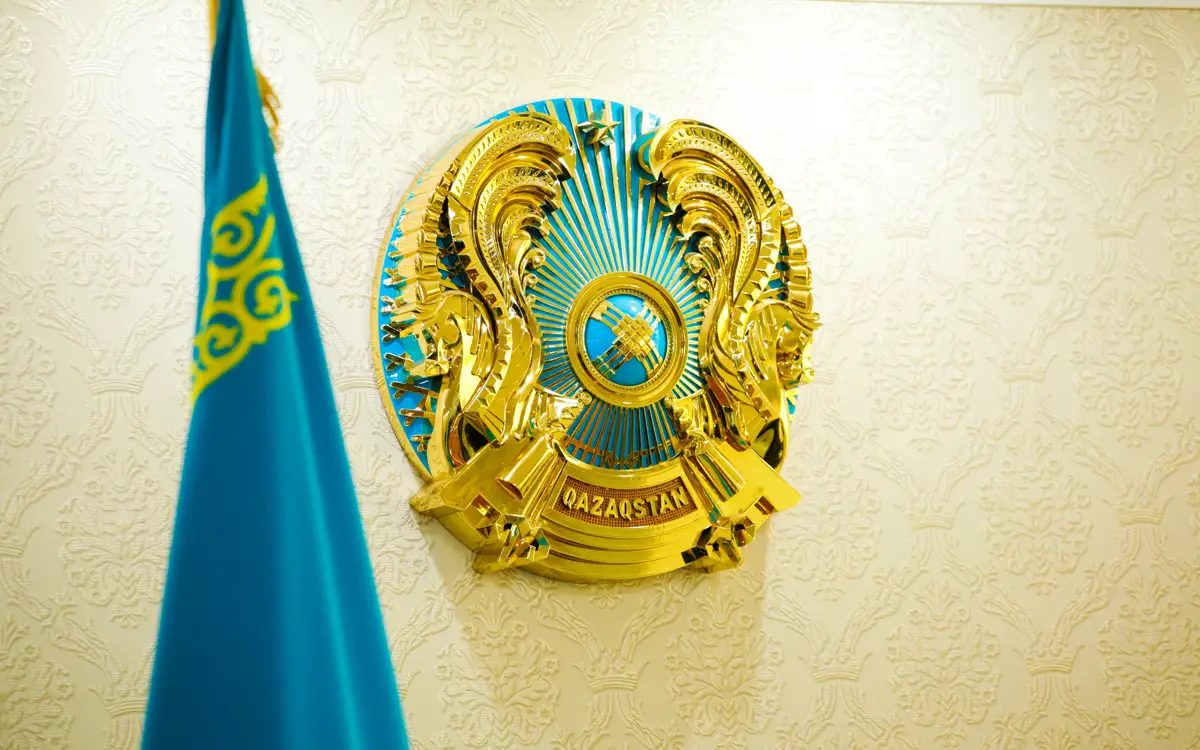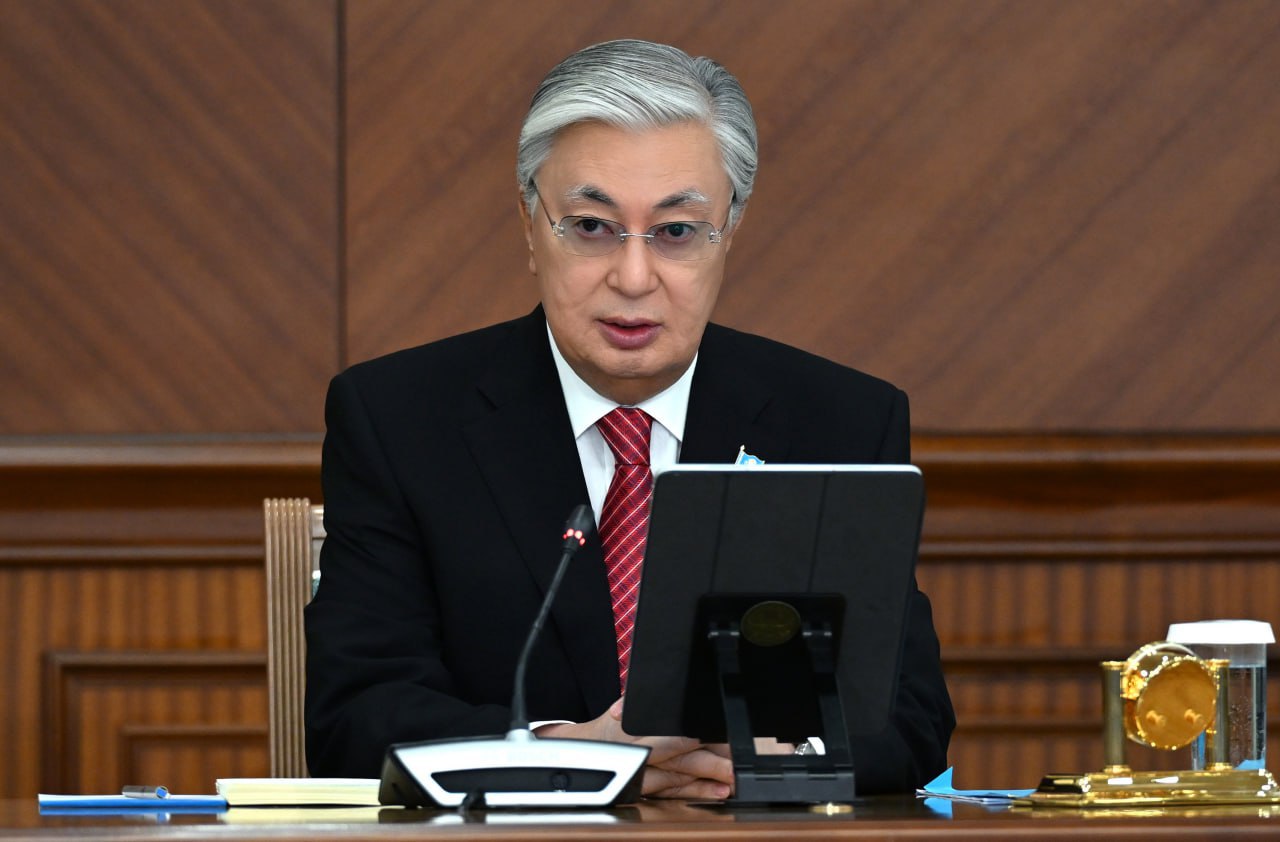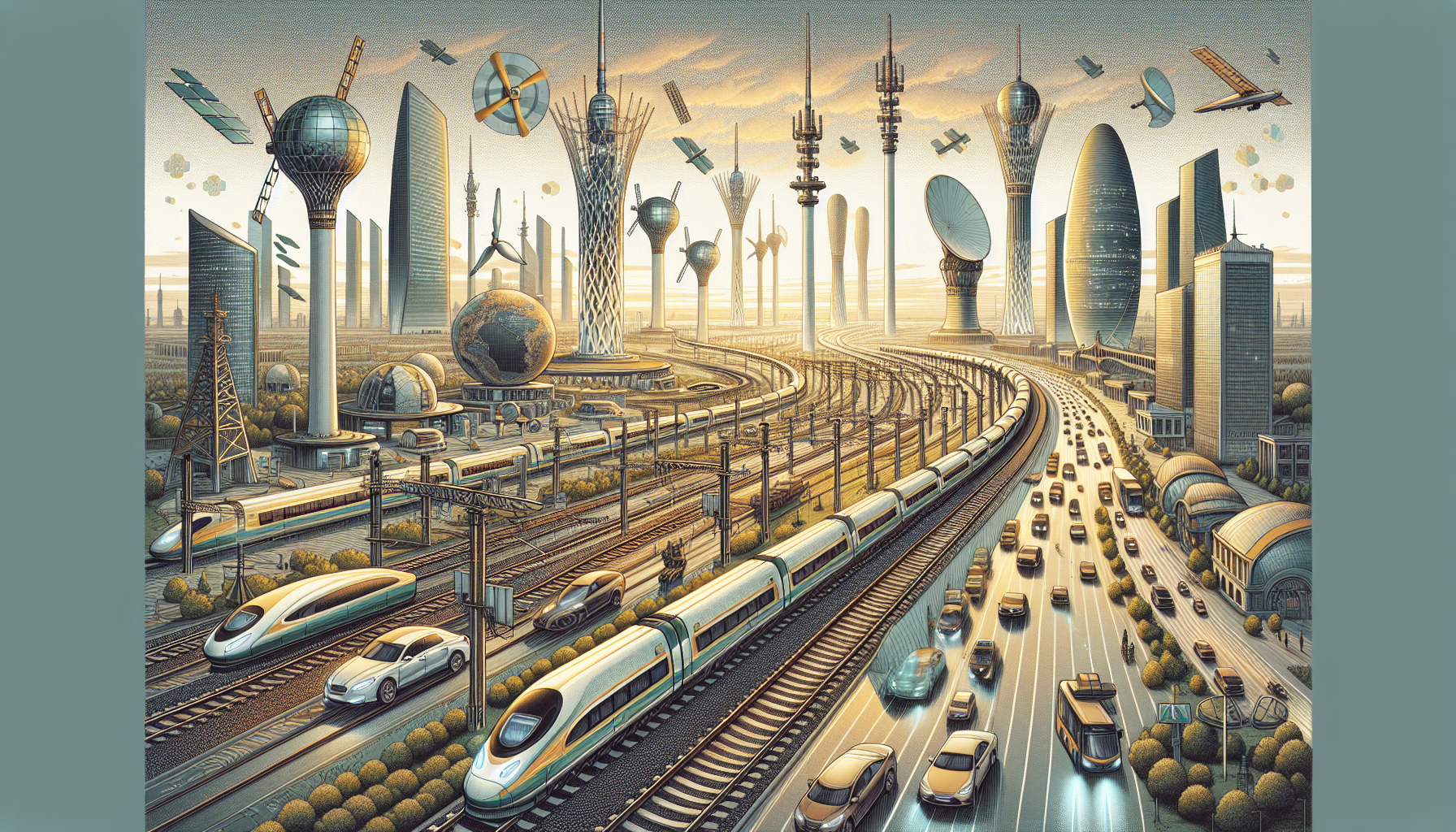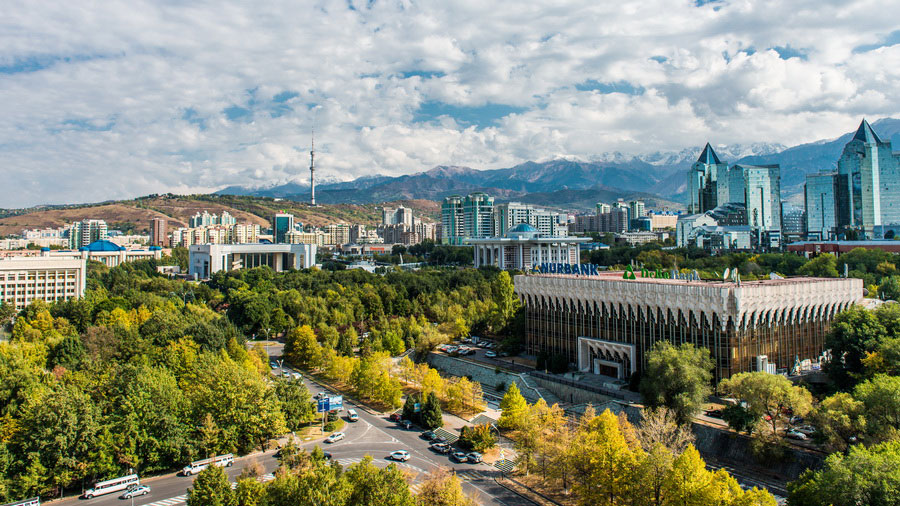Kazakhstan: A Comprehensive Overview of Culture, Geography, IT technologies and Development

Kazakhstan is a nation of both historical depth and rapid modern transformation. It stands as Central Asia’s economic powerhouse fueled by vast natural resources, while retaining its deeply rooted cultural heritage. This exploration reveals the essence of Kazakhstan – its landscapes, cultural diversity, evolving economy, and place in the world today. The country is becoming a major hub for technology development and startups, so there will be many references in this text to materials about technology companies from Kazakhstan that are ready to conquer the world.
Key Takeaways
- Kazakhstan’s vast and diverse geographical landscape is integral to its culture and economy, with varied ecological zones, immense natural resources in its mountain ranges, and major water bodies like the Caspian and Aral Seas facing environmental challenges.
- The country’s rich cultural tapestry is woven from a variety of ethnicities and languages, with the Kazakh language serving as a unifying factor, and is expressed through vibrant arts, crafts, and traditions celebrated in numerous festivals.
- Kazakhstan is navigating a complex political and economic landscape with a strong presidential system, an economy reliant on natural resources like uranium and oil, and efforts to innovate and diversify, including a growing startup scene and strategic investments in infrastructure.
Exploring Kazakhstan's Varied Landscape
Nestled in the vast region of Central Asia, the Republic of Kazakhstan presents an array of geographical wonders that are as vast as its landmass. From the expansive Kazakh Steppe, a testament to the country’s nomadic roots, to the fertile agricultural lands of northern Kazakhstan, this is a land of contrasts. The steppe, with its endless horizons, has been the cradle of Kazakh tribes and culture for centuries. It is a region where whispers of the past live on in the rustle of feather grass and the resilience of tamarisk plants.
But Kazakhstan is not just a tableau of flatlands within the vast Kazakh territory; it also hosts mountain ranges that cradle precious natural resources, vital to the nation’s economic pulse.
Might be interesting

The Kazakh Steppe and Arable Land
The Kazakh Steppe, a vast expanse of over 804,500 square kilometers, stretches like a green sea from the shores of the Caspian to the foothills of the Altai Mountains. This land, characterized by its five distinct ecological zones, is a mosaic of forest steppes, meadow steppes, and semi-deserts, each with its unique beauty and ecological significance.
Historically, the steppe was the roaming ground for nomadic peoples, whose livelihoods were intricately linked to these grasslands. Today, the echoes of their presence are still felt in the mix of agricultural lands that dot the landscape, testament to the transformative power of intensive agriculture that took root in the 20th century.
Might be interesting
Mountain Ranges and Natural Resources
Majestic and rich in mineral wealth, the Altai and Tien Shan mountain ranges stand as silent guardians over Kazakhstan’s valuable natural resources. These towering peaks hold bountiful coal deposits, contributing to Kazakhstan’s reputation as a significant producer of this fossil fuel.
Beneath the craggy landscapes lie extensive crude oil reserves, a lifeblood of the nation’s energy sector, and precious metals that are the cornerstone of its mining industry. The riches encapsulated within these mountains are not just a source of wealth but also a catalyst for development, fueling Kazakhstan’s economy and driving its growth as a leading player in the global energy market.

Major Bodies of Water
The tale of Kazakhstan’s landscape would be incomplete without a mention of its significant bodies of water, particularly the Aral and Caspian Seas. The Caspian Sea, the world’s largest inland body of water, is a biodiversity hotspot that supports a myriad of aquatic species. Yet, these waters are not immune to the challenges of modernity, as Kazakhstan grapples with environmental issues that threaten the delicate balance of its major lakes and seas.
The plight of the Aral Sea, once the fourth-largest lake in the world, now stands as a stark reminder of the environmental cost of mismanagement and pollution, urging a global call to action to restore and protect these vital ecosystems.
The Mosaic of Kazakh Culture
Kazakh culture is a vibrant patchwork of traditions, languages, and ethnicities, each thread representing the complex history and identity of this nation. At the heart of Kazakhstan’s cultural identity is the Kazakh language, a Turkic language that serves as a unifying force amidst the country’s diverse ethnic tapestry. The presence of ethnic Russians, Uzbeks, Uyghurs, and numerous other groups adds to this richness, creating a cultural landscape as varied as the steppes themselves.
From the iconic yurt, a symbol of nomadic heritage, to the haunting melodies of throat singing, Kazakhstan’s culture is steeped in history and brimming with artistic expression.
Might be interesting
Ethnic Tapestry and Languages
The fabric of Kazakhstan’s society is woven with many threads, including:
- Ethnic Kazakhs, who constitute the majority at roughly 71% of the population
- Ethnic Russians, who represent a significant 15% of the population
- Ukrainians, Germans, Tatars, and others, each group contributing their own cultural nuances and traditions to the overall identity of the country.
Amidst this tapestry, the Kazakh language stands proud as the state language, while Russian, due to historical influence, remains widely spoken, facilitating a multilingual society that echoes the country’s complex past.
Cultural Heritage and Arts
Delving deeper into the realm of Kazakh culture reveals a rich heritage of arts and crafts. Some integral pieces of Kazakhstan’s cultural legacy include:
- The meticulous art of carpet-weaving
- The creation of ornate pottery
- The craftsmanship involved in leatherwork
- The tradition of the yurt
- The artistry of traditional clothing
- The epic storytelling of legendary heroes like Kurmangazy
These elements have shaped the nation’s sense of identity.
Contemporary Kazakhstani art, while rooted in the ancient methodologies of nomadic civilizations, has also been influenced by Russian styles, showcasing a blend of influences that have shaped the nation’s artistic expression.
Might be interesting

Festivals and Traditions
The cultural heartbeat of Kazakhstan is best experienced through its festivals and traditions, which serve as a kaleidoscope of the nation’s rich artistic heritage. The spring festival Nauryz marks the New Year in Kazakhstan’s calendar, bringing communities together in celebration with folk dancing, music, and traditional customs.
The Chabana Festival, an August highlight, showcases the skills of local herders in traditional sports that echo the nomadic lifestyle of the Kazakh people. International artists congregate in September for the Astana International Contest of Kazakh Song, a cultural event that transcends language barriers and unites performers in a shared appreciation of Kazakh music.
The Republic of Kazakhstan: Political and Economic Landscape

The Republic of Kazakhstan, a country that has weathered the storms of its former Soviet Union past, is now navigating a complex political and economic landscape as a soviet republic successor. The country has faced economic challenges, particularly due to its heavy reliance on oil exports, which has made it susceptible to global market fluctuations and geopolitical risks. Despite these challenges, Kazakhstan is striving for growth and autonomy, albeit limited by state controls and pervasive Russian influence.
The nation’s pursuit of political reforms and a more market-oriented economy is a testament to its resilience and drive for progress.
Government Structure and Political Reforms
In Kazakhstan, the President holds significant sway over the government, independently appointing key ministers and wielding influence over national policies. The President’s power extends to veto appointments recommended by the Prime Minister, ensuring a strong presidential republic.
The bicameral Parliament, consisting of the Senate and the Mazhilis, is a reflection of the country’s legislative framework, which has undergone constitutional amendments aimed at refining the political landscape.

Kazakhstan's Economy and Global Trade
Kazakhstan’s economy is intricately linked to its natural resources, particularly uranium, oil, and precious metals, positioning it as a key player on the global stage. The volatility of its GDP, as seen following the crash in oil and mineral prices in 2014, underscores the need for economic diversification.
Despite these challenges, Kazakhstan has maintained robust global trade links, with exports amounting to $65.919 billion in 2019 and a strong presence in the OPEC+ group, highlighting its strategic economic partnerships.
Might be interesting
Innovation and Startups
The winds of innovation are blowing across Kazakhstan, with startups experiencing significant growth and setting their sights on international expansion, particularly the U.S. market. This burgeoning startup scene is a reflection of Kazakhstan’s entrepreneurial spirit and its aspirations to play a major role in the global technology landscape.
With each new venture and foreign investment, the country moves closer to establishing itself as a cradle of innovation in Central Asia.
The export of IT services for 9 months of 2023 amounted to $373 million, Kazinform reports. According to the forecasts of the Ministry of Finance, the annual figure will reach $500 million.
Yersultan Ermanov, Director of the Information Technology Industry Development Department of ICRIAP, told a press conference at the Central Communications Service that there is a growing demand for Kazakh IT services in the world. In 2020, the country will receive $30 million from foreign customers, and by 2022, it will be $343 million.
Yermanov attributes the success of Kazakh IT companies to the opening of the Astana hub and the launch of acceleration and training programmes:
- This has borne fruit in the form of exports. And start-ups are becoming competitive. There is no Kazakh "unicorn" yet, but I think we will not have to wait long.
Might be interesting
The Heart of Eurasia: Kazakhstan's Strategic Position

Kazakhstan’s strategic position at the heart of Eurasia is not just a geographical statement but a metaphor for its role as a cultural and economic bridge between the East and West. The country’s extensive landmass stretches into Easternmost Europe and across Central Asia, making it a key player in international trade and geopolitical dynamics.
With President Tokayev’s investment plan to develop the Middle Corridor, Kazakhstan aims to enhance its transit routes and solidify its status as a pivotal transport and logistics hub.
Crossroads of East and West
Kazakhstan’s historical ties to the Silk Road are being revitalized through its crucial part in China’s Belt and Road Initiative, serving as a land corridor connecting Asia with Europe. This role capitalizes on its strategic geographic position, which allows it to bridge not only continents but also diverse economic markets.
Kazakhstan’s strategic importance in the global arena is highlighted by its economic ties with neighboring countries, such as China and Russia, which significantly impact its own economic performance.
Might be interesting
International Relations and Alliances
Kazakhstan’s foreign policy is characterized by a multivector approach, balancing its relationships with regional powers, such as Russia and China, and engaging with a wide array of international partners. Kazakhstan joined the Eurasian Economic Union (EAEU), but despite being a part of it, the country has not reaped substantial trade benefits and has taken steps to align itself with global trade norms by restricting the transit of sanctioned goods.
This strategy underscores Kazakhstan’s desire to maintain sovereignty and diplomacy in an increasingly complex geopolitical landscape.
Security and Defense
Kazakhstan’s armed forces, comprising Land, Naval, and Air and Air Defense Forces, are tasked with maintaining the nation’s sovereignty and participating in humanitarian and peacekeeping operations. Partnerships with NATO and the initiation of new National Guard units highlight Kazakhstan’s commitment to bolstering its defense capabilities.
Modernizing Kazakhstan: Technology and Infrastructure

Kazakhstan is marching steadfastly into the future, investing heavily in modernizing its infrastructure and technology sectors. The Nurly Zhol initiative represents a significant commitment of USD 9 billion to enhance the nation’s:
- roads
- railways
- ports
- airports
- IT infrastructure
Similarly, in the realm of space exploration, the National Space Agency of Kazakhstan, KazCosmos, embodies the nation’s aspirations to reach the stars through satellite acquisition, astronaut training, and international cooperation.
Advancements in Telecommunications
Kazakhstan’s advancements in telecommunications are a testament to its rapid technological development, with a high mobile-cellular subscription rate reflecting a society that is increasingly connected and digitally savvy. While fixed telephone subscriptions have seen a decline, the country’s commitment to enhancing its telecommunications infrastructure ensures that its citizens and businesses remain competitive in a globalized world.

Energy Sector Dynamics
The dynamics of Kazakhstan’s energy sector are shaped by its vast reserves of natural gas, coal, and the potential for renewable energy sources. With significant production and export of natural gas, the country plays a crucial role in the global energy landscape. However, the energy sector’s contribution to high carbon dioxide emissions and greenhouse gas output highlights the urgency for environmental initiatives, such as Carbon Capture and Storage (CCS) technologies, to mitigate the impact of energy production.
Might be interesting
Transportation Networks
Kazakhstan’s geographical endowments come with the challenge of being a landlocked nation, which significantly impacts transportation costs and its global competitiveness. Recognizing this, significant investments are being channeled into enhancing transportation infrastructure, with the aim of capitalizing on the strategic location as a transit route for international cargo flows.
From the development of railways to the repair of over 11,000 kilometers of roads, Kazakhstan is paving the way for a more connected future, which includes the expansion of cargo terminals at major airports to bolster air transport infrastructure.
Preserving the Environment Amidst Progress
As Kazakhstan strides forward on the path of progress, it faces the critical balancing act of preserving its environment. Industrial activities have led to significant carbon dioxide emissions, and the country is confronted with a myriad of environmental challenges ranging from pollution to desertification.
In the face of such threats, Kazakhstan is not standing idle. The country has made commendable strides in environmental conservation, as evidenced by the designation of Naurzum and Korgalzhyn as UNESCO World Heritage sites and initiatives to revive fish populations in its major water bodies.
Current Environmental Concerns
The specter of environmental degradation looms over Kazakhstan, with air pollutants from stationary sources surpassing 2.4 million tons, signaling a critical need for pollution control measures. The Caspian Sea, in particular, faces formidable challenges as pollution threatens its delicate aquatic ecosystems — ecosystems that are home to unique species such as:
- the sturgeon
- the Caspian seal
- the Caspian turtle
- the Caspian horse
Addressing these concerns is paramount if Kazakhstan is to safeguard its natural heritage for future generations.
Sustainable Initiatives
Recognizing the urgency of environmental sustainability, Kazakhstan is actively partnering with NGOs, the UNDP, and engaging in programs like the Green Bridge Partnership to combat ecological issues. These initiatives are a part of a broader commitment to achieve sustainable development goals, with civil society organizations playing a pivotal role in cooperation with the United Nations.
Despite the predominance of government involvement, especially in water resources and waste management, the strides made in establishing a Regional platform for sharing knowledge and best practices related to SDGs underscore the importance of international cooperation, such as the European Union, the Shanghai Cooperation Organisation, and the World Trade Organization, in this arena.
Might be interesting
Renewable Energy Prospects
Transitioning to a green economy is a strategic priority for Kazakhstan, with the government creating incentives for renewable energy projects as part of this vision. With ambitious targets set for renewable energy production, the country is exploring solar, wind, and hydropower to diversify its energy mix. Despite facing challenges such as a lack of infrastructure and an underdeveloped market for renewables, initiatives like the operational wind power plant in Yereymentau and the construction of a solar power plant in Karaganda are steps towards realizing Kazakhstan’s renewable energy potential.

Cultivating Human Capital: Education and Health
Kazakhstan understands that the cornerstone of any nation’s progress lies in the cultivation of its human capital. This understanding is reflected in the ongoing reforms across the country’s education and healthcare sectors. With an aim to improve the well-being of its populace, Kazakhstan is not only enhancing the quality of its educational curriculum but is also undertaking significant healthcare system reforms.
Educational System and Reforms
The educational landscape in Kazakhstan includes:
- High literacy rates
- Accessible secondary education
- Free education guaranteed by the constitution
- Increase in private educational institutions
- Centralized education policies
- Establishment of Nazarbayev Intellectual Schools
- Commitment to elevating the standards of education
- Alignment with international academic systems
Healthcare Services
The healthcare system in Kazakhstan is predominantly public, with a comprehensive network of primary, secondary, and tertiary care facilities. Accessible primary healthcare, through facilities like ambulatories and polyclinics, forms the backbone of the system.
The National Medical Holding represents a central institution aimed at fostering innovation in healthcare technologies. Additionally, the Ministry of Health is spearheading efforts to establish a compulsory health insurance system to further reform and improve healthcare services.

Workforce Development
With nearly 40% of Kazakhstan’s population under the age of 25, the country boasts a youthful labor force brimming with potential. The tertiary education system in Kazakhstan is adopting a greater focus on international collaboration and embracing a Western academic credit system, which is expected to facilitate international study opportunities and contribute to workforce development.
Summary
As we conclude this panoramic overview of Kazakhstan, it’s clear that the nation is a dynamic blend of heritage and modernity. From the sweeping steppes to the bustling cities, Kazakhstan’s landscape is a testament to its natural beauty and resource wealth. Its culture is a rich tapestry of ethnic diversity and artistic traditions, while its political and economic framework reflects a country in the throes of transformation. Kazakhstan’s strategic position as a bridge between continents, its modernization efforts in technology and infrastructure, its environmental initiatives, and its investment in human capital are all indicators of a nation poised for continued growth. The journey ahead is one of potential and promise, as Kazakhstan continues to carve out its unique identity on the global stage.
Frequently Asked Questions
(from foreigners, according to AI analytics data)
Is Kazakhstan a part of Russia?
NO! Kazakhstan is not a part of Russia as it gained its independence from the former Soviet Union in 1991.
What Kazakhstan is known for?
Kazakhstan is known for its cultural diversity, stunning natural landscapes, including the Altai mountains and Kazakh steppe, and its famous Golden Man artifact. With 131 ethnicities and a rich history, Kazakhstan offers an ultimate adventure for travelers.
What language is mostly spoken in Kazakhstan?
The official language spoken in Kazakhstan is Kazakh, which represents the majority (65%) of the population. Other languages spoken in the country include Russian, Uzbek, Ukrainian, Uyghur, Tatar, German, and others.
What is the religion of Kazakhstan?
The religion of Kazakhstan is predominantly Sunni Islam, with a significant percentage of the population also practicing Christianity. The country is home to a diverse population, including Muslim Kazakhs and Christian Russians and Ukrainians.
What are the main environmental concerns in Kazakhstan?
The main environmental concerns in Kazakhstan include air and water pollution, desertification, soil contamination, and ecological crises in the Aral and Caspian Seas. These issues pose significant challenges for the country.
And one more inspiring story from Kazakhstan
Aiming for enhanced senior years: kazakhstani innovators devise digital test for early detection of dementia
Yussup Tumgoyev from Kokshetau has been involved in entrepreneurship for almost all of his life. In the second year of his university studies together with his friend he was selling chocolates from Europe to students. In the third year of his university studies, he launched the subscription for the delivery of diapers. After that followed the state purchases in the area of hygiene products and the coffee shop in the business center. These endeavors proved more profitable.
Nevertheless, conventional business didn’t truly captivate Yussup. He immersed himself in the realm of IT and following a number of setbacks, introduced the initiative myMind. This entails a digital assessment aimed at detecting Alzheimer’s disease (dementia) during its initial phases. Yussup disclosed what directed him towards MedTech, his six-month residence in a hospital within the Almaty region, and his approach to implementing the notion of a virtual hospital.



